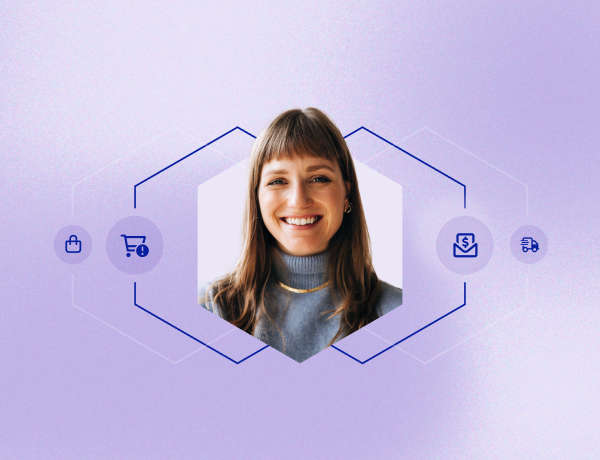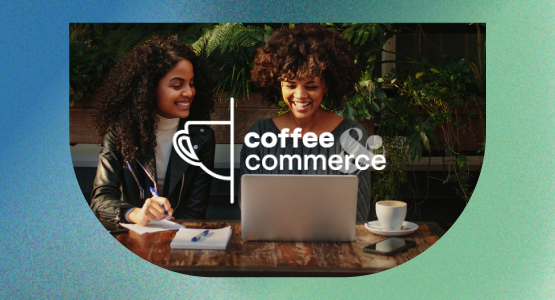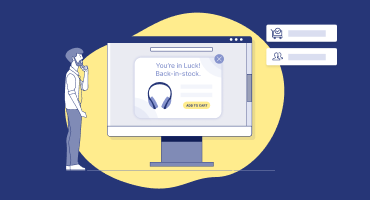Just last month, Amazon shoppers spent $12.7 billion for Prime Day, making July 11 the largest sales day in the company’s history. Over the past eight years, Prime Day has become an ecommerce extravaganza on par with Black Friday Cyber Monday (BFCM). That’s especially impressive once you consider that Prime Day started as a made-up holiday for Amazon’s most high-value customers: its loyalty program members.
Prime Day speaks to the power of brand loyalty and the importance of nurturing high-value customers. Sure, Amazon has the advantage of selling everything that’s ever existed. But even without that massive customer base, you can still build your own brand loyalty with personalized shopping experiences that marry customers with your unique product assortment.
You can’t personalize someone’s experience without knowing who they are. Identity is at the center of creating high-value customers. Only once you’ve identified your site visitors can you move them down the path from browsers to buyers to loyalists.
Customer Movement: Moving customers toward long-term loyalty
Research finds that the brain releases dopamine in anticipation of a reward, which explains why shopping for new products is so much fun for people. Retail marketers are people, too, and their pursuit of novelty often translates to, “How many new customers can we acquire?”
It’s important to focus on quality in addition to quantity. Quantity is how many customers you acquire, retain, and reactivate. Quality is how much do customers spend, how often do they buy, and how long do they buy. While that’s easier said than done, your best revenue opportunity is hiding in plain sight: your existing customers.
Current active customers typically represent less than half of a brand’s customer base, but the majority of purchases come from just 30% of a brand’s customer base.
Nurturing this pool of customers (quality) and growing this pool of customers (quantity) is critical to growing revenue and lifetime value, especially with BFCM looming. To do so, lean into what Bluecore calls, “customer movement.” This is a retailer’s ability to effectively move shoppers from browser to buyer to loyalist. By focusing on customer movement, or improving the quality and quantity of your customer base, you can better connect acquisition and retention efforts that benefit the growth of your business.
Seeing potential high-value customers
Not all customers are created equal. In fact, there’s a lot you can tell from your existing high-value customers that give insight into ways to improve the quality of the rest of your customer base.
Things that indicate a high-value customer includes high purchase frequency, high average order value, and year-over-year buying. Focusing campaigns on improving these measures are key to improving the quality of your customer base. For example, category affinity campaigns can be used to introduce existing customers to new products for a repeat buy. In the same vein, providing a site experience that includes unique product recommendations on the cart page can help increase cart size and therefore average order values.
There are also signals that new customers implicitly share that lend itself to potential high-value behavior in the future. Lulu and Georgia used shopper signals to focus paid media efforts on shoppers with the highest potential value – those who looked like their existing VIPs. Lulu and Georgia not only turned more shoppers into repeat buyers, they were able to create a more efficient acquisition strategy that led to higher ROI.
From buyers to repeat buyers
There’s a formula behind moving first-timers to repeat buyers. It’s not mass marketing and excessive discounting, which can cheapen your brand’s value — and ultimately, your margins — if you’re not careful. After all, why would someone ever pay full price if they know a 25% offer is most likely right around the corner?
Once a customer has converted, you can use their browsing and purchase history as a foundation for deeper personalization as you learn more about their habits and preferences. Triggers are an important tactic at this stage of creating high-value customers, too. For example, beauty brands deal in consumables, and strategically timed replenishment triggers can remind someone to stock up at their unique replenishment timeline. Apparel brands can use post-purchase triggers to recommend complementary items or introduce customers to a new category.
Predictive modeling empowers you to be more proactive as well. Whatever you’ve learned about a customer can be fed to predictive models, which give you insights into future behavior – what they’re likely to purchase next or whether they will need a discount to convert.
By leveraging predictive retail models such as Bluecore’s push-button next best purchase and discount affinity, one leading health and beauty brand was able to increase cross-category discovery, increasing revenue per client by 8.4%.
From repeat buyers to regular customers
Bluecore found that second-time buyers are 101% more valuable than first-time buyers. That’s the good news. The great news is that each subsequent purchase increases the likelihood that they’ll buy again.
However, customers still need to be engaged to ensure that happens. With inherently personalized products that are designed to look different on everyone, health and beauty jobs do an exceptional job here. During BFCM last year, 50% of their buyers had purchased with them five or more times.
Brand loyalty requires a relationship built on specificity. For example, with category affinity and hidden gem campaigns, you can surface products in a category the customer has a preference for, or highlight items that are high-converting but less visible on the site. Lifecycle stage is another indicator for future high-value customers. Say someone has purchased from you during the holidays multiple times, but has fallen off their typical purchase cadence. A well-timed winback message can bring them back into the fold, reminding them what they’re missing.
Affinity audiences have proven to be effective for CITY Furniture for engaging both repeat and lapsed customers. Within one year, CITY Furniture saw a 118% increase in repeat buyers and pulled 30% of inactive and at-risk buyers back into the fold.
Keeping identity at the center
Defined as the percentage rate of shoppers on a website who are identified by an attribute such as email address or login name, identification rate is the foundation of creating high-value customers and driving customer movement.To learn more about identification — including how it aligns with the bottom line, must-watch funnel metrics to watch, and four steps to put it to work for you this holiday season — download Halfway to Black Friday.





